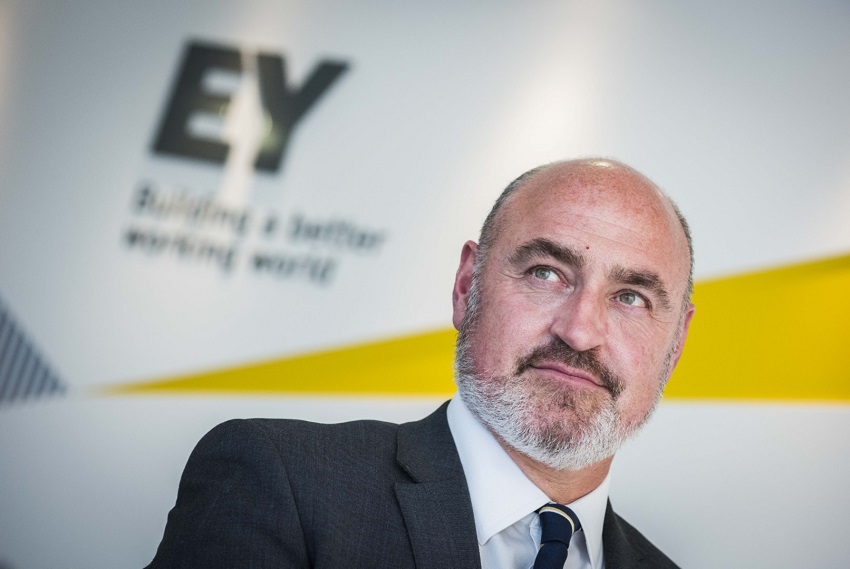EY: Scotland leads UK in foreign direct investment growth

Ally Scott
Scotland has maintained its position as the second most attractive location for foreign direct investment (FDI) in the UK, after London, securing a record 124 projects in 2023.
According to EY’s Scotland Attractiveness Survey, this represents a 12.7% increase from the previous year, significantly outpacing the UK’s overall FDI growth of 6%. Scotland’s share of all UK projects rose to 14.4%, the fifth consecutive year of increase and its highest in a decade.
The US has remained the single biggest originator of FDI projects, accounting for 27 projects or 19% of Scotland’s total during the year — the lowest proportion in the past decade. Projects from Germany doubled to 20, a decade high, making it the second-biggest source of projects into Scotland, followed by France with 10.
Three Scottish cities ranked in the UK’s top 10 urban locations for FDI outside of London, as Edinburgh is placed second with 32 projects, Glasgow fourth with 25 projects, and Aberdeen eighth with 13 projects.
Welcoming the results, Deputy First Minister and Economy Secretary Kate Forbes said: “These results show a record performance, with Scotland once again outpacing the UK as a whole and the European Union when it comes to securing foreign direct investment projects, delivering on the actions and priorities we have set out in government.
“From being at the forefront of the energy transition to the rapidly emerging cutting-edge technologies, we have an enormous opportunity to capitalise even further. We will continue to work with our economic development agencies as part of a ‘team Scotland’ approach to attracting foreign direct investment and bringing more high quality jobs across Scotland.”
A surge in utility supply investments boosts Scotland’s fortunes
Utility supply is the leading sector for Scotland’s FDI, with 40 projects secured in 2023, a rise of 81.8% on the 22 projects secured in 2022, and the highest recorded by any sector in any year of the past decade in Scotland. This is followed by digital technology, business services, and transport & logistics, each securing 14 projects. This contrasts with the UK and the rest of Europe, where digital technology leads the sectors for inward investment. For the first time in six years, utility supply has overtaken digital technology projects in Scotland due to increasing levels of low-carbon and ‘cleantech’ investment.
This shifting trend gives rise to more projects located out with the country’s main cities. Scotland’s past success in maintaining its longstanding position as the second-ranked ‘region’ of the UK for FDI has been largely built on the success achieved by its cities. However, the strong rise in sustainable utility supply projects – generally located in more rural areas – could create a shift in Scotland’s investment hubs.
Investor sentiment continues to increase but there is ‘no room for complacency’
According to the survey, 69% of investors are planning to establish or expand operations in the UK over the next year – and 26% are planning to invest in Scotland, second only to London. When investors were surveyed on which locations specifically, 23% are targeting Edinburgh and 9% Glasgow – putting those cities in second and fourth respectively among all UK cities.
Investors’ main criteria when considering investing in the UK includes access to regional grants and incentives, the local skills base, and the availability of business partners and suppliers.
Ally Scott, EY Scotland managing partner, said: “Scotland has demonstrated yet another very strong performance, both in attracting FDI and retaining the confidence of investors.
“Utilities, including renewable energy, plays a strong role in Scotland’s FDI growth story, as the country leads in sustainability and low-carbon power generation.
“This offers a real competitive advantage on the back of the ScotWind leasing rounds, but will it create the critical momentum required to see another impressive yield in the years ahead?
“Yet, as we celebrate the continued trend of year-on-year success in FDI, there is no room for complacency. We still hear frustrations from clients and the market that Scotland’s tightening economic policies, including the latest income tax hikes and issues around city and infrastructure quality, are causes for concern.”
Mr Scott continued: “While the potential impact of these goes far beyond FDI, the fact remains that access to talent is a major driver of attractiveness and investment.
“Action is also needed around the ease, transparency, and efficiency of planning processes to make Scotland and its cities more globally accessible to help boost the incoming flow of people and capital.
“Scotland has come second to London for projects in nine of the past ten years, but this status can’t be taken for granted and other parts of the UK are closing in on Scotland’s lead.
“Now is the time to capitalise on the strong historical performance by taking active steps to leverage our position and raise ambition further, setting the scene for the next wave of growth in projects.”
Outpacing the UK and Europe
Scotland outpaced both the UK and Europe with FDI growth last year. Europe recorded a 4% year-on-year decline with a total of 5,694 projects recorded in 2023. This was the continent’s lowest FDI total since 2020, was 11% lower than its pre-pandemic level (6,412) and 14% lower than 2017 (6,653). 2017 represented Europe’s highest peak for projects in the last decade.
The UK’s share of all European FDI projects grew to 17.3% in 2023, an increase on the 15.6% seen in 2022. However, the UK’s broader FDI trend mirrors Europe’s by recording a lower level of projects in the last four years in comparison to pre-pandemic levels. UK project numbers have remained below 1,000 since 2019 and there were 220 fewer projects recorded in 2023 than at the UK’s high point of the decade in 2017, when 1,205 projects were recorded.
A resurgence in net new investments
Scotland’s strong year in attracting FDI projects in 2023 is further underlined by its impressive performance in attracting ‘new’ projects from first-time investors (as opposed to expansions of existing investments). New projects secured increased by 28.8% from their level in 2022, rising from 66 projects to 85 in 2023, marking the highest across the decade and almost three times the total in 2014, when just 29 projects were secured.
Significantly, Scotland’s haul of new projects in 2023 increased at a faster rate than for the UK, pushing its share of all new UK projects up to 11.5% from 10.2% in 2022. This means Scotland’s UK share has risen in four consecutive years, increasing from just 5.9% of new UK projects as recently as 2019. With Scotland securing 14.4% of all UK projects in 2023 but 11.5% of new projects, it has also put in a stronger performance in securing project expansions than the UK.
Peter Arnold, EY UK chief economist, said: “Enhancing the attractiveness of its diverse regions will be key to elevating the UK’s national investment profile.
“The progress of Scotland and the West Midlands shows that there is a clear appetite for investing outside London. Our survey highlights that deploying a combination of incentives, grants and skills-building can be a key motivator for attracting global capital to different parts of the UK.
“National policy can only do so much and local government and development bodies have key roles to play here, driving activity in promoting targeted growth initiatives and accelerating growth in locally prioritised sectors.
“The diversity of sectors outside the capital could become a significant asset for the UK, if it plays to its regional strengths. Manufacturing and utility supply are key sectors in Scotland, the North and the Midlands. With targeted strategic investment and support, these areas have the potential to emerge as vital hubs for the innovation and implementation of sustainable technologies, driving the nation’s progress in the clean tech arena.”







